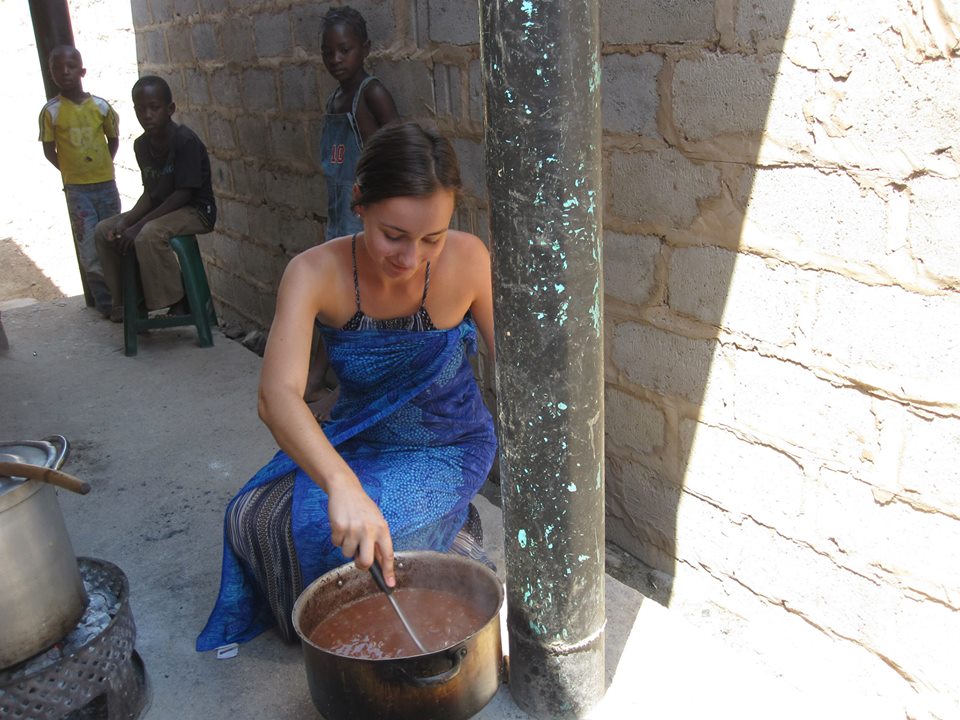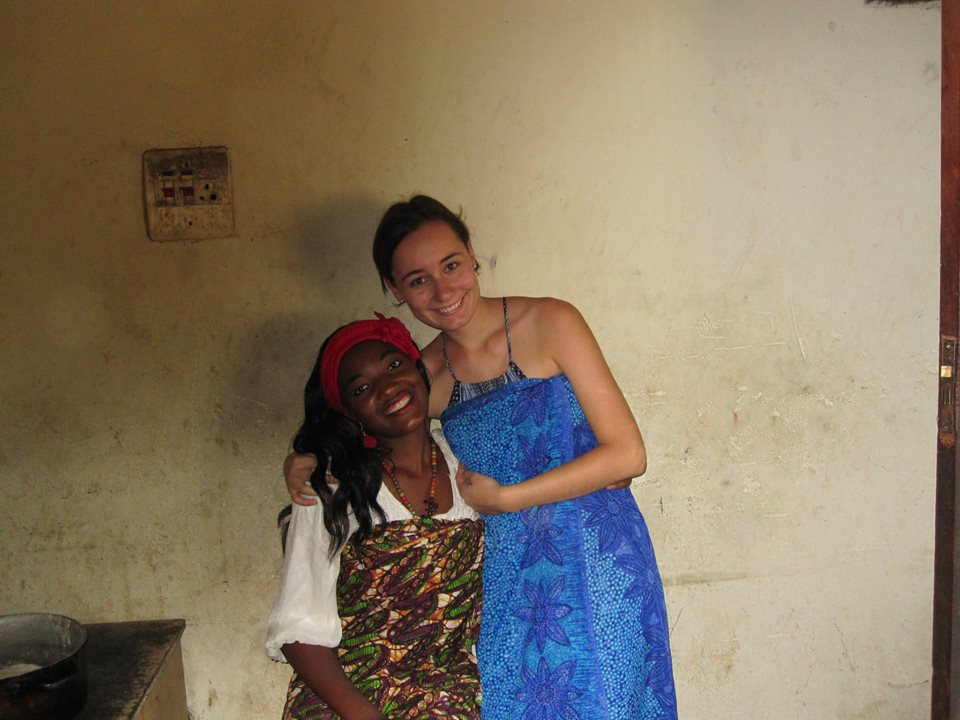A Muzunga in the Kitchen: Anaëlle Sacco brings a French touch to Zambian staples
Somebody call the Food Network! A French chef and muzunga has been busy preparing meals for dozens of Zambian students.

Well, Anaëlle Sacco isn’t actually a French chef. But she is French and a muzunga and she has been cooking a lot. And the meals Anaëlle is making are as important as any served in the fanciest five-star restaurant.
A recent graduate of the Neoma Business School and marketing specialist, Anaëlle has been volunteering at the Amos Youth Centre in Shikoswe. Her responsibilities and interests have included cooking for the Breakfast Club, one the African Education Program’s most essential services.
The nourishment from these meals is crucial to all the students, some of whom are HIV positive and simply wouldn’t survive without the sustenance.
“She devoted her time in the kitchen and has helped with cooking,” said Agnes Banda, AYC’s Director of Youth Counseling.
Rather than Foie Gras, Bouillabaisse, or Cassoulet, Anaëlle has been cooking that Zambian staple nshima, a mix of cornmeal and water.
“What surprised us all was the skill she had cooking nshima,” Mrs. Banda said.
While the ingredients are simple enough, there’s a certain technique required that not just anybody can master. Paste is made from the cornmeal and then it must boil and be stirred until it becomes soft.
“You have to stir it in a way that’s very difficult because the nshima becomes hard,” Anaëlle said. “Also, cooking for 40 or 50 students is harder than just one.”
Consistency is one of the keys. It’s said that a Zambian woman who can’t make nshima isn’t as desirable as a wife.
“Once you know how to prepare it, then you can get married,” Mrs. Banda said. “It’s one of the qualifications to become a good wife.”
Nshima isn’t the only item on the menu. Anaëlle also cooks fried eggs with tomatoes and onions, fish (kapenta), and beans.
“I always enjoyed cooking for others, so learning how to cook the Zambian food is a great opportunity,” Anaëlle said. “I will be able to cook it when coming back to France.”
Anaëlle’s menu and vocabulary have expanded during her time in Zambia. Every Caucasian who has visited with AEP has learned the word muzunga, a word used to describe white people. The term dates back to the 18th century and is used by Bantu peoples in Kenya, Tanzania, Malawi, Rwanda, Uganda, and Zambia.
Literally translated, it meant “aimless wanderer,” and was first used to describe European explorers who tended to get lost wandering Africa.
The term is used affectionately to describe Anaëlle and other AEP visitors. She certainly isn’t aimless, in or outside of the kitchen. One of her favorite things has been working with Gladys, a recent high school graduate who is waiting to hear of her university acceptance.
“Gladys is also a great cook and teacher so it's very easy to learn,” Anaëlle said. “We also have some great time laughing together and she became one of my best friends here in Shikoswe.”





